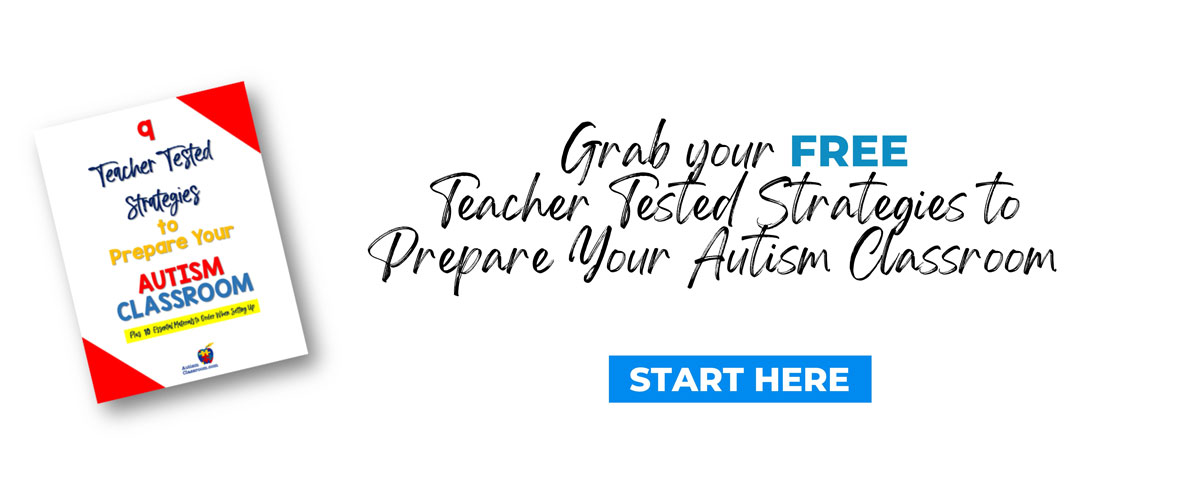
Can most classrooms really say they have a program for their students with autism? We know they definitely have lessons and activities. But, to be implementing a program suggests that an organized set of plans, systems or activities specific to the deficits faced by individuals with autism have been purposeful chosen and implemented to help move students toward a particular long-term goal. And, someone else can follow and repeat the same formula to keep it running. How many can say that?
I certainly like to encourage the use of centers to help in creating a classroom program for students with autism and similar special needs. Centers and rotations (where students rotation from one center to the other in a systematic way) is key. Although for many, this year, it may be through breakout rooms during virtual learning.)
Why a program in a classroom for students with autism? First of all, some schools there is no curriculum. AND…if there is a curriculum, it needs to be modified so much that it feels like there isn't one.
We know that students with autism have unique deficits in social skills, language and communication skills, and interpersonal behavior. Addressing these specific skills deliberately and daily will lead to improvement.
So what might that look like?
- Smaller time segments will work for most.
- The program can be run in 35-minute or 45-minute blocks (10 minutes-10 minutes-10 minutes or 15 minutes-15 minutes-15 minutes).
- If needed, a two-minute or five-minute break can be given in between.
What centers would make up the program? Since we know that social skills, language skills and interpersonal behavior skills are the major areas most affected by autism, it may work well to start with those. Or, start with social skills, language skills, and individual objectives/goals from the student’s IEP program. Another suggestion would be to add a second set of 10-minute rotations to focus on structured play skills, fine motor skills, and phonics skills. The rest of the day, could be focused on content in subject areas.
Check out part 2 of this blog Series here or for more detailed information about creating centers, check out our Step by Step Autism Classroom Design course.


